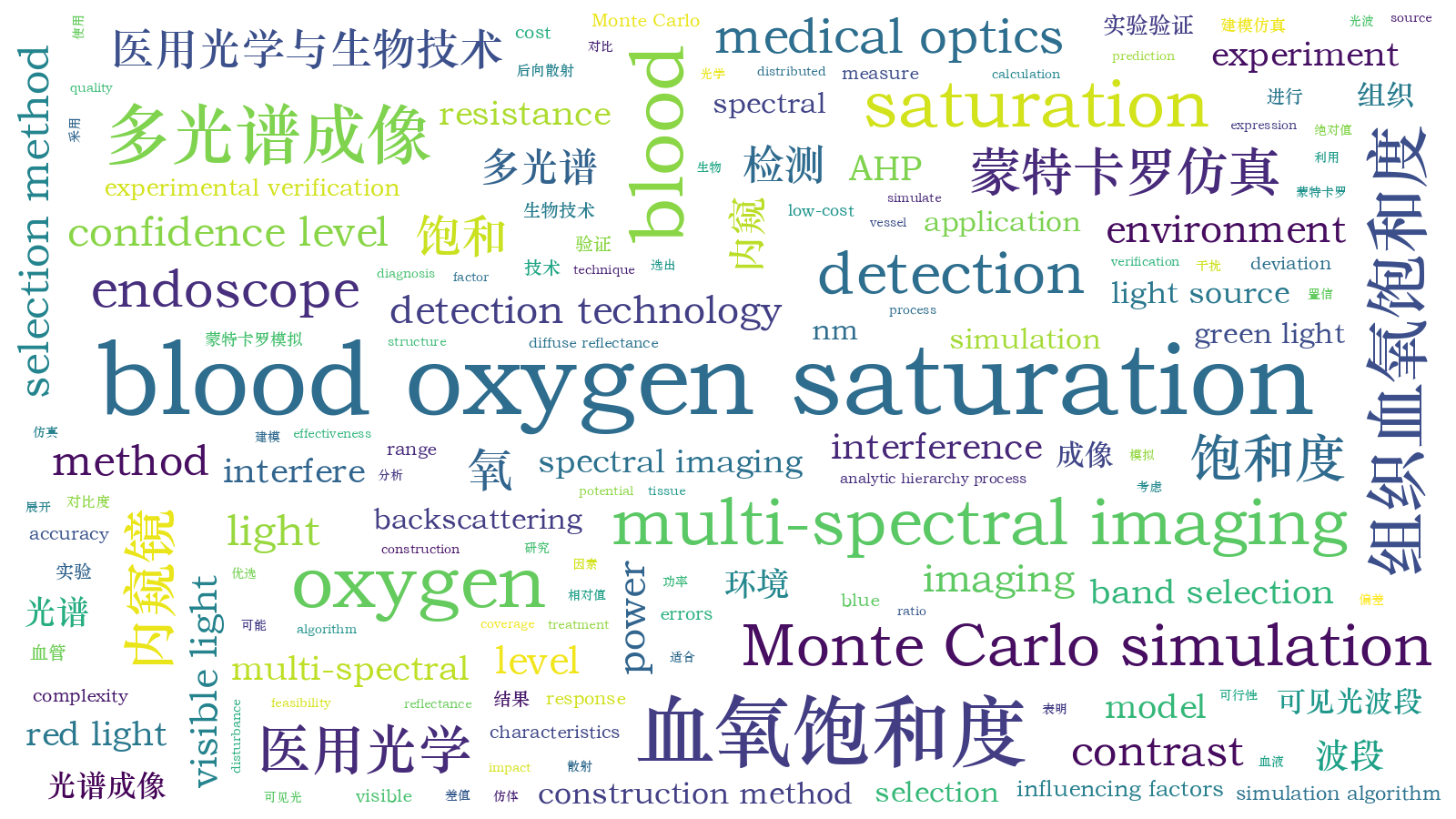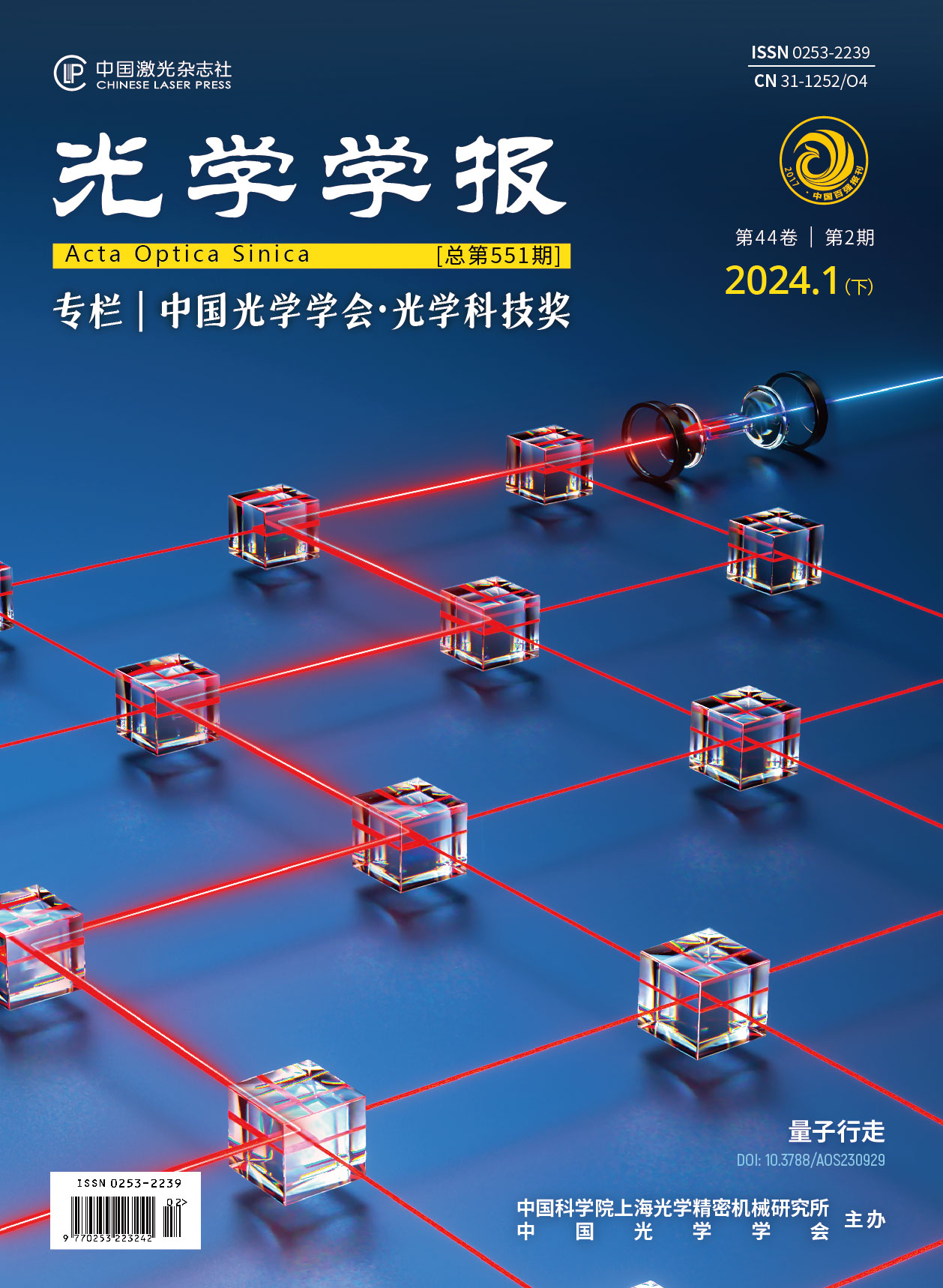内窥环境下多光谱血氧饱和度检测
Hypoxemia is a common clinical phenomenon that is closely associated with various pathological changes caused by a decrease in oxygen saturation to different degrees. We aim to develop a low-cost blood oxygen saturation detection technology that can be adapted to a wider range of endoscopes for clinical practice and patient diagnosis and treatment. By expanding the application scenarios of endoscopic blood oxygen detection and enriching its practical application value, we hope to help popularize the application of endoscopic technology in remote and resource-scarce areas and improve the coverage and quality of medical services.
We initially employ the Monte Carlo simulation technique to model and simulate multi-spectral imaging of blood vessel tissue in the visible light range. The absolute value, relative value, absolute difference, and contrast of the backscattering power of blood at different levels of oxygen saturation are analyzed. In response to the complexity of multi-spectral blood oxygen saturation detection in an endoscopic environment, the analytic hierarchy process (AHP) is used to comprehensively analyze various factors that could potentially interfere with the results. By adopting a hierarchical analysis approach, the factors that could potentially interfere with blood oxygen detection are categorized into four major groups: controllable conditions before the experiment, controllable conditions during the experiment, errors before the experiment, and errors during the experiment. After assigning importance ratings to these factors, questionnaires are distributed to laboratory researchers, physicians, and other professionals, so as to gather their opinions on the various sub-categories within each major group. By combining the opinions obtained through the questionnaire with AHP, we derive the importance weightings of the top 16 factors that could potentially interfere with the experimental results, and all weightings are below 0.06. Based on this analysis, four imaging bands suitable for endoscopic environments are selected: absolute difference, relative value, absolute value, contrast, and disturbance resistance. With the blue and green light bands primarily used to measure changes in light source power and consider imaging contrast and the red light band primarily used to measure changes in blood oxygen saturation and highly influenced by interfering factors, these four optimal imaging bands are utilized for experimental verification of blood oxygen saturation detection.
When the optimal bands were selected, in response to the complexity of multi-spectral blood oxygen saturation detection in an endoscopic environment, AHP is employed to comprehensively analyze various factors that could potentially interfere with the results. The weights of indicators representing the level of resistance to external interference in an endoscopic environment are obtained through this analysis (Fig. 3). Considering the impact of each influencing factor, we conduct an optimal analysis of the blood oxygen saturation detection bands by combining the characteristics of contrast and backscattering power. The potential effects of various influencing factors on endoscopic blood oxygen detection results are determined (Fig. 4). Based on this analysis, four imaging bands suitable for endoscopic environments are selected, namely, 450 nm, 525 nm, 630 nm, and 660 nm (Fig. 5). Built upon these selected wavelengths, a blood oxygen saturation prediction model is established by defining an intermediate variable based on the difference ratio of two backscattering powers. The model considers both fixed endoscopic detection distances and arbitrary intervals. The accuracy and effectiveness of the model are validated through experiments. The results indicate that under equidistant conditions, the deviation of blood oxygen saturation is 0.77% at a confidence level of 95% and 1.01% at a confidence level of 99%. Under non-equidistant conditions, the deviation of blood oxygen saturation is 0.94% at a confidence level of 95% and 1.24% at a confidence level of 99% (Fig. 9).
We investigate the diffuse reflectance power and contrast of different bands of visible light under different blood oxygen saturation conditions in an endoscopic environment using the Monte Carlo simulation algorithm. Additionally, we examine 16 influencing factors that may affect blood oxygen saturation detection in an endoscopic environment and combine AHP to determine the resistance to interference of various bands under red light. Based on the characteristics of the red, green, and blue bands, a comprehensive analysis combining contrast, resistance to interference, absolute value of power detection, absolute difference, and relative value is conducted to select the optimal bands, namely 450 nm, 525 nm, 630 nm, and 660 nm. Moreover, based on these selected bands, blood oxygen saturation analysis formulas are proposed for both equidistant and non-equidistant states, utilizing a quadratic cubic expression. These formulas have the advantages of simplicity in structure and quick calculation. Furthermore, laboratory experiments are conducted on vascular phantoms using an endoscope to verify the feasibility and scientific validity of the simulation experiments and the selected band method. Finally, we compare the four-band selection method with the three-band selection method, the non-equidistant band method, and the blood oxygen reverse construction method, demonstrating the advantages of the four-band selection method in terms of the accuracy and cost of blood oxygen saturation detection.
章昶威, 邹鸿博, 齐伟明, 朱文武, 王立强, 袁波. 内窥环境下多光谱血氧饱和度检测[J]. 光学学报, 2024, 44(2): 0217001. Changwei Zhang, Hongbo Zou, Weiming Qi, Wenwu Zhu, Liqiang Wang, Bo Yuan. Multi-Spectral Blood Oxygen Saturation Detection in Endoscopic Environment[J]. Acta Optica Sinica, 2024, 44(2): 0217001.







